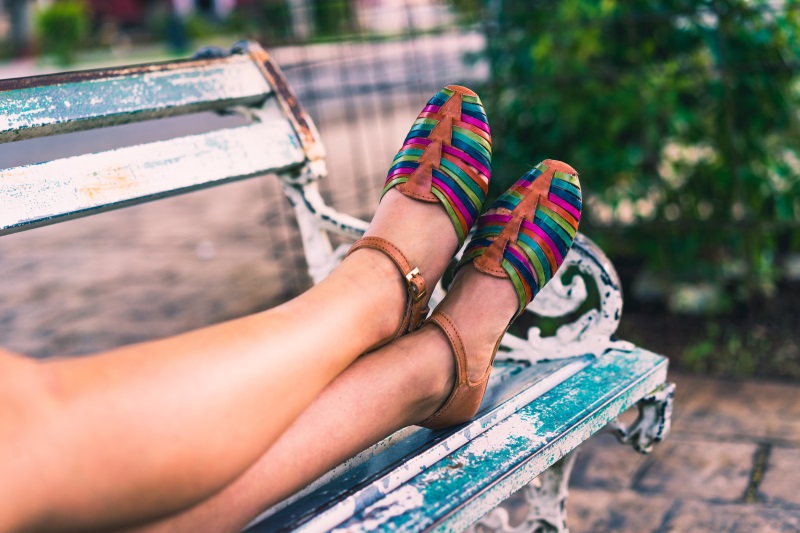How to Get Quick Relief from Heel Pain
Medstars and podiatrist, Mr Mark O’Sullivan, explore the causes of and relief for painful heels.
The health of your feet is pretty important. After all, they’re responsible for carrying you through your day to day life! Unfortunately, most people only give this a second thought when their feet start to hurt. 1 in 10 of us will suffer from heel pain at some point in our lives- and there are a variety of reasons why.

A common cause of heel pain is plantar fasciitis. The plantar fascia is a band of tissue that stretches from your heel to the middle of the foot. It works as a shock absorber. However weight gain, having flat or high arches or wearing ill-fitting shoes may result in it being overworked, which in turn causes pain in your heels.
Aside from plantar fasciitis, heel pain may be a result of a repetitive strain injury. This is more likely to occur if you’re on your feet all day, every day. Heel pain may also occur as a result of arthritis, or simply as part of the ageing process. Mark names ‘other possible causes [as] stress fractures, particularly in people who do a lot of high impact exercise. A heel spur, (commonly associated with plantar fasciitis symptoms but is caused by additional bony growth protruding from the heel) is also a consideration.’
If your heel pain affects your quality of life or leaves you unable to carry out day to day tasks, it is important to see a podiatrist. They will be able to diagnose the source of your heel pain. Once you know what’s causing it, it will be easier to come up with a plan to prevent and treat your painful feet.
But what if you need pain relief now? Fortunately, there are some easy ways to quickly soothe your heels which don’t require a podiatrist appointment.
Rest

Putting your feet up will ease the pain (or at the very least, stop it from getting any worse) by removing any pressure and strain on your feet. See if you can swap high-impact exercise such as running for swimming or cycling, which are a lot easier on the feet.
Massage
Massaging your heels and the area around them is a quick and effective way to soothe them. Try rolling a frozen bottle of water under your heels and arches for 10 minutes. While the bottle massages, the ice numbs any sensitivity and reduces inflammation.
Medication
Taking an anti-inflammatory painkiller such as ibuprofen will provide quick and temporary relief from your sore heels. Mark notes that it is ‘particularly effective in the very early stages when the pathology is considered to be more associated with inflammation. This however can reduce in effectiveness over time as the inflammation is thought to give way to a more degenerative/atrophy type process. (This is where advice with regards to stretching and strengthening programmes becomes essential).’ Always be sure to read the label and to consult your doctor if needed before taking any sort of medication.
Stretching
Stretching is multi-beneficial. If the problem is plantar fasciitis, stretching strengthens the plantar fascia and also makes it more flexible, reducing your chances of painful heels in the future. Gently pulling your big toe towards you, or using a towel under your arches to pull your feet towards you, provides a deep stretch which does the trick. It’s also worth stretching your calf muscles- they’re part of the same system as the plantar fascia. Stronger calves mean less weight on the band, which means less heel pain for you. Stretching out will also provide relief from other sources of heel pain.
Assess your footwear

Making sure that you wear supportive, comfortable shoes is a must- sadly, your pancake-flat trainers or sky-high heels aren’t going to do the trick. If you regularly suffer from heel pain, look into purchasing insoles or orthotic inserts to provide some added support. Mark advises that a professional like him ‘is best placed to advise on what footwear will work best for you and what orthotics will be most suitable, be it over the counter supports or a more bespoke type device.’
No time to go shopping? Check your existing wardrobe and see if you have any shoes with a two or three centimetre heel- if you have to be on your feet, these are your best bet for preventing sore heels. ‘This will provide some short term relief from any tightness in the calf muscles and plantar fascia, however it it is essential to couple this with regular/daily stretching, otherwise you run the real risk of exacerbating symptoms when returning to a flat shoe or barefoot.’
‘In addition to the above suggestions, there are a range of other treatments that your Podiatrist can escalate to if they have limited impact. These can include steroid injections and shockwave therapy. In the severest of cases, surgery may be required to release the plantar fascia but this is extremely rare and, as always with surgery, is a last resort’ adds Mark.
You can book a consultation with Mr Mark O’Sullivan, who has specific expertise in heel pain, biomechanics, foot dermatology, sports injuries and toenail surgery, here.
Medstars Medical Concierge Service
Looking for extra guidance when it comes to your healthcare? Sometimes interpreting medical information and making the best decisions can be daunting and complicated. Our private medical concierge service provides easy access to top UK health experts. We guide our patients with genuine choice and trust, offering a bespoke service for anyone in the world seeking private UK healthcare. Learn more about Medstars Medical Concierge Service. Want to learn more about providing our medical concierge service as an employee benefit? Learn more about Medstars Medical Concierge for Business.

